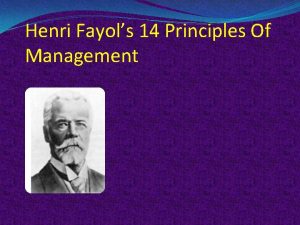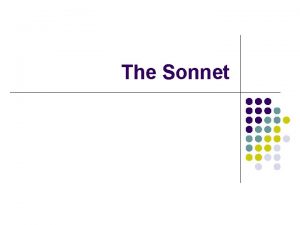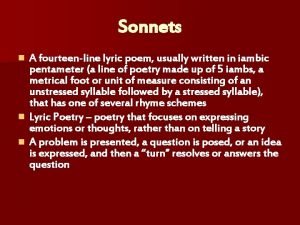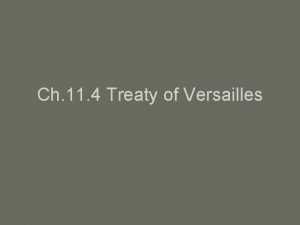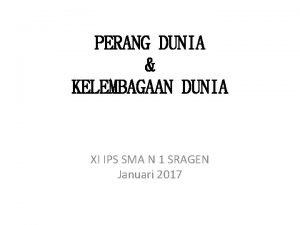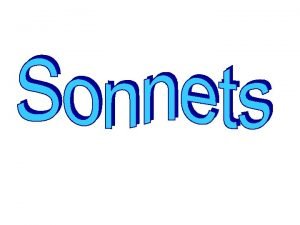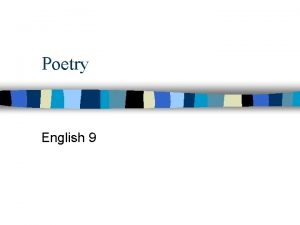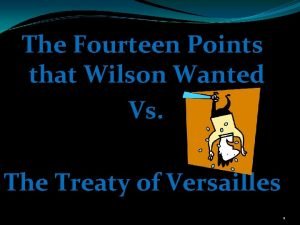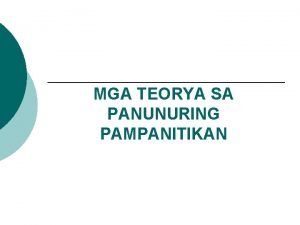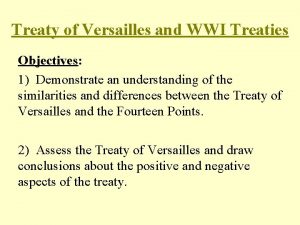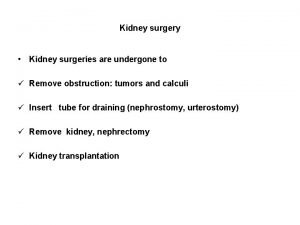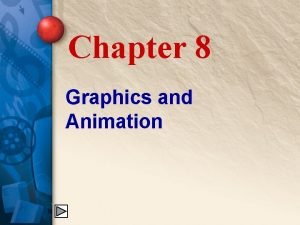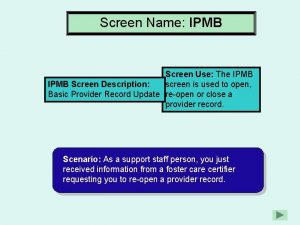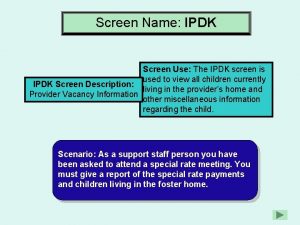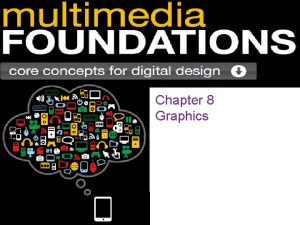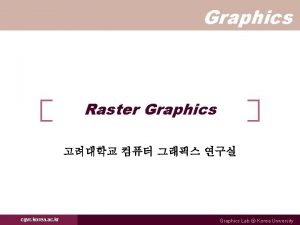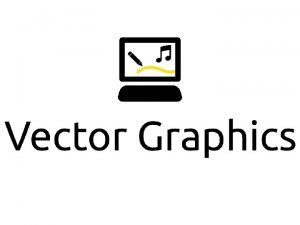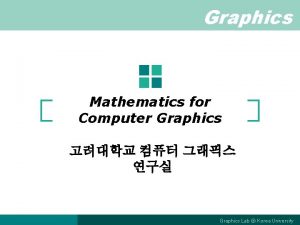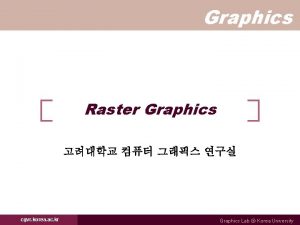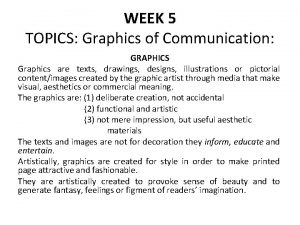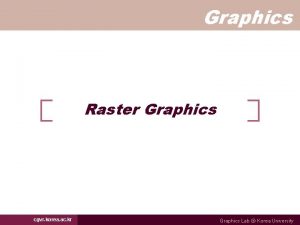14 1 CHAPTER FOURTEEN Retention Management Screen graphics






























- Slides: 30

14 -1 CHAPTER FOURTEEN Retention Management Screen graphics created by: Jana F. Kuzmicki, Ph. D Troy State University-Florida and Western Region Mc. Graw-Hill/Irwin © 2004 The Mc. Graw-Hill Companies, Inc. , All Rights Reserved.

14 -2 Staffing Organizations Model Organization Vision and Mission Goals and Objectives Organization Strategy HR and Staffing Strategy Staffing Policies and Programs Support Activities Core Staffing Activities Legal compliance Planning Recruitment: Selection: Job analysis Employment: External, internal Measurement, external, internal Decision making, final match Staffing System and Retention Management Mc. Graw-Hill/Irwin © 2004 The Mc. Graw-Hill Companies, Inc. , All Rights Reserved.

14 -3 Chapter Outline n Turnover u Nature u Types and Its Causes of Problem of Turnover u Causes n Analysis of Turnover u Measurement u Reasons u Costs n Retention Initiatives: Discharge n Retention Initiatives: Downsizing n Legal Issues for Leaving and Benefits n Retention Initiatives: Voluntary Turnover Mc. Graw-Hill/Irwin © 2004 The Mc. Graw-Hill Companies, Inc. , All Rights Reserved.

14 -4 Turnover and Its Causes n Nature n Types of problem of turnover n Causes Mc. Graw-Hill/Irwin of turnover © 2004 The Mc. Graw-Hill Companies, Inc. , All Rights Reserved.

14 -5 Nature of the Problem n Employee retention can contribute to organizational effectiveness n Turnover is not only costly but may be beneficial n Focus of retention strategies u Number u Who of employees retained and is retained n Turnover is inevitable n Approach to retention management u Gather Mc. Graw-Hill/Irwin and analyze employees’ reasons for leaving © 2004 The Mc. Graw-Hill Companies, Inc. , All Rights Reserved.

14 -6 Types of Turnover n Exhibit 14. 1: Types of Employee Turnover n Voluntary u Avoidable - Could be prevented Ø Try to prevent Ø Do not try to prevent u Unavoidable - Could not be prevented n Involuntary u Discharge u Downsizing Mc. Graw-Hill/Irwin © 2004 The Mc. Graw-Hill Companies, Inc. , All Rights Reserved.

14 -7 Exhibit 14. 1: Types of Employee Turnover Voluntary -- Employee Initiated Avoidable (could prevent) Try to Prevent: High-Value Employees • High performance • Strong KSAOs • Valued intellectual capital • High promotion potential • High training investment • High experience • Difficult to find replacement Mc. Graw-Hill/Irwin Unavoidable (could not prevent) Do not Prevent: Low-Value Employees • Low performance • Weak KSAOs • Little intellectual capital • Low promotion potential • Low training investment • Low experience • Easy to find replacement No attempt to Prevent: Regardless of Value • Retirement • Dual career • New career • Health • Child care or pregnancy • Elder care • Return to school • Leave country • Take a break © 2004 The Mc. Graw-Hill Companies, Inc. , All Rights Reserved.

14 -8 Exhibit 14. 1: Types of Employee Turnover Involuntary -- Organization Initiated Discharge Downsizing • Discipline • Permanent layoff • Poor performance • Temporary layoff • Site or plant closing, relocation • Redundancy due to merger or acquisition Mc. Graw-Hill/Irwin © 2004 The Mc. Graw-Hill Companies, Inc. , All Rights Reserved.

14 -9 Causes of Turnover: Voluntary Exhibit 14. 2: Causes of Voluntary Turnover n Behavior of leaving preceded by intention to quit n Factors affecting intention to quit n u Perceived desirability of leaving Ø Often results from a poor person/job or Ø Person/organization match u Perceived ease of leaving Ø Represents lack of barriers to leaving and Ø Of being able to likely find a new job u Available alternatives Ø Depends on other job options both within and outside organization Mc. Graw-Hill/Irwin © 2004 The Mc. Graw-Hill Companies, Inc. , All Rights Reserved.

14 -10 Exhibit 14. 2: Causes of Voluntary Turnover Desirability of Leaving Low job satisfaction Shocks to employee Personal (nonjob) reasons Ease of Leaving Favorable labor market conditions General, transferable KSAOs Low cost of leaving + + Intention to Quit + Quit Alternatives Internal: New job possibilities External: Job offers Mc. Graw-Hill/Irwin + © 2004 The Mc. Graw-Hill Companies, Inc. , All Rights Reserved.

14 -11 Causes of Turnover: Discharge and Downsizing n Discharge turnover u Mismatch between job requirements and KSAOs Ø Employee fails to follow rules and procedures Ø Unacceptable job performance n Downsizing turnover u Mismatch in staffing levels which leads to an overstaffing situation u Factors related to overstaffing Ø Lack of forecasting and planning Ø Inaccuracies in forecasting and planning Ø Unanticipated changes in labor demand and/or supply Mc. Graw-Hill/Irwin © 2004 The Mc. Graw-Hill Companies, Inc. , All Rights Reserved.

14 -12 Analysis of Turnover n Measurement n Reasons n Costs for leavings and benefits Mc. Graw-Hill/Irwin © 2004 The Mc. Graw-Hill Companies, Inc. , All Rights Reserved.

14 -13 Measurement of Turnover: Formula n Turnover rate of employees leaving average number of employees x 100 u Number n Data and decisions u Identify time period of interest u Determine type of employees that count u Determine method to calculate average number of employees over the time period Mc. Graw-Hill/Irwin © 2004 The Mc. Graw-Hill Companies, Inc. , All Rights Reserved.

14 -14 Measurement of Turnover: Breakouts and Benchmarks n Breakouts u Analysis of turnover data aided by deciding on categories of data Ø Type of turnover Ø Type of employee Ø Job category Ø Geographic location n Benchmarks u Internal - Trend analysis u External - Compare internal data with external data Ø Exh. Mc. Graw-Hill/Irwin 14. 3: Sample Annual Separation (Turnover) Data © 2004 The Mc. Graw-Hill Companies, Inc. , All Rights Reserved.

14 -15 Measurement of Turnover: Reasons for Leaving Important to ascertain, record, and track reasons why employees leave n Tools n u Exit interviews Ø Formal, u Postexit planned interviews with departing employees surveys Ø Surveys u Employee sent to employees soon after their last day satisfaction surveys Ø Surveys of current employees to discover sources of dissatisfaction which may become reasons for leaving Ø Results can provide information to pre-empt turnover Ø Require substantial resources Mc. Graw-Hill/Irwin © 2004 The Mc. Graw-Hill Companies, Inc. , All Rights Reserved.

14 -16 Guidelines: Conducting Exit Interviews n Interviewer should be a neutral person who has been trained in how to conduct exit interviews n Training issues u How to put employee at ease and explain purpose u How to follow structured interview format and take notes u How to end interview on positive note n Structured interview format should contain questions about unavoidable and avoidable reasons for leaving u Exh. 14. 4: Examples of Exit Interview Questions n Interviewer should prepare by reviewing interview format and interviewee’s personnel file n Interview should be conducted in private, before employee’s last day n Interviewee should be told interview is confidential Mc. Graw-Hill/Irwin © 2004 The Mc. Graw-Hill Companies, Inc. , All Rights Reserved.

14 -17 Measurement of Turnover: Costs and Benefits n Costs and benefits can be estimated for each of the three turnover types n Types of costs u Financial u Nonfinancial n Some costs and benefits can be estimated financially n Nonfinancial costs and benefits may outweigh financial ones in importance and impact Mc. Graw-Hill/Irwin © 2004 The Mc. Graw-Hill Companies, Inc. , All Rights Reserved.

14 -18 Costs and Benefits for Types of Turnover n Voluntary turnover Costs Benefits u Exh. 14. 5: Voluntary Turnover: Costs and Benefits u Exh. 14. 6: Example of Financial Cost Estimates for One Voluntary Turnover n Discharge u Exh. 14. 7: Discharge: Costs and Benefits n Downsizing u Exh. Mc. Graw-Hill/Irwin 14. 8: Downsizing: Costs and Benefits © 2004 The Mc. Graw-Hill Companies, Inc. , All Rights Reserved.

14 -19 Retention Initiatives: Voluntary Turnover n Current u What practices and deciding to act do organizations do? Ø Exh. 14. 9: Retention Initiatives: Usage and Effectiveness u Decision Ø Exh. process 14. 10: Decision Process for Retention Initiatives n Desirability of leaving u Exh. 14. 11: Guidelines for Increasing Job Satisfaction and Retention n Ease of leaving n Alternatives Mc. Graw-Hill/Irwin © 2004 The Mc. Graw-Hill Companies, Inc. , All Rights Reserved.

14 -20 Exh. 14. 10: Decision Process for Retention Initiatives n Do We Think Turnover Is a Problem? n How n What Might We Attack the Problem? Do We Need to Decide? n Should n How We Proceed? Should We Evaluate the Initiatives? Mc. Graw-Hill/Irwin © 2004 The Mc. Graw-Hill Companies, Inc. , All Rights Reserved.

14 -21 Exh. 14. 11: Guidelines for Increasing Job Satisfaction and Retention Match rewards to employee preferences n Make rewards unique n Rewards must be meaningful n Link rewards to retention behaviors n Deliver on rewards that are promised n Reward permanency is important n Remember intrinsic rewards n Fairness and justice are key n Communicate continuously n The manager matters n Mc. Graw-Hill/Irwin © 2004 The Mc. Graw-Hill Companies, Inc. , All Rights Reserved.

14 -22 Ease of Leaving n Two points of attack u Provide organization-specific training Ø Should organization invest in training to provide general or organization-specific KSAOs? Ø Combine training strategy with a selection strategy focused on assessing and selecting general KSAOs u Increase cost of leaving by providing Ø Above-market pay and benefits Ø Deferred compensation Ø Retention bonuses Ø Desirable location of company’s facilities Mc. Graw-Hill/Irwin © 2004 The Mc. Graw-Hill Companies, Inc. , All Rights Reserved.

14 -23 Alternatives n Approaches to make internal alternatives more desirable than outside alternatives u Internal staffing Ø Encourage employees to seek internal job opportunities Ø Provide attractive internal options outside of traditional internal staffing system u Responding to external job offers entails developing appropriate policies Ø Decide whether to provide counteroffers or not Ø Determine types of employees to provide counteroffers Ø Decide who will develop counteroffer and nature of approval process Mc. Graw-Hill/Irwin © 2004 The Mc. Graw-Hill Companies, Inc. , All Rights Reserved.

14 -24 Retention Initiatives: Discharge n Performance u Exh. management 14. 12: Performance Management Process u Manager training and rewards n Progressive discipline u Five requirements of a progressive discipline system P. 701 u Actions to take Ø Exh. 14. 13: Progressive Discipline Examples: Misconduct and Penalties Mc. Graw-Hill/Irwin © 2004 The Mc. Graw-Hill Companies, Inc. , All Rights Reserved.

14 -25 Exh. 14. 12: Performance Management Process Organization Strategy Work-Unit Plans (1) Performance Planning Goals Competencies (4) Decisions (2) Performance Execution Pay Training/career plans Performance problems Retention Resources Coaching Feedback (3) Performance Appraisal Goal attainment Competency ratings Written comments Feedback Mc. Graw-Hill/Irwin © 2004 The Mc. Graw-Hill Companies, Inc. , All Rights Reserved.

14 -26 Retention Initiatives: Downsizing n Weigh advantages and disadvantages u See n Exh. 14. 8 Staffing levels and quality u View retention in two ways Ø Balance a financial quick fix against unlikely return of downsized employees if economic conditions improve Ø Approach reductions in selective or targeted terms, rather than across the board u Determine who should be retained, if cuts are made Ø Retain most senior employees Ø Make performance-based decisions Ø Retain “high-value employees” and layoff “low-value employees” Mc. Graw-Hill/Irwin © 2004 The Mc. Graw-Hill Companies, Inc. , All Rights Reserved.

14 -27 Retention Initiatives: Downsizing (continued) n Alternatives to downsizing u No layoff or guaranteed employment policy u Layoff minimization programs Ø Exh. n 14. 14: Layoff Minimization Examples Employees who remain u Potential results of ignoring survivors Ø Increased stress levels Ø Critical appraisals of downsizing process Ø Examples of “survivor sickness” u Provide programs to meet needs of survivors Ø Enhanced communication programs Ø Morale-boosting events Ø Promotion of EAPs Ø Stress-related training Mc. Graw-Hill/Irwin © 2004 The Mc. Graw-Hill Companies, Inc. , All Rights Reserved.

14 -28 Legal Issues n Separation laws and regulations n Performance Mc. Graw-Hill/Irwin appraisal © 2004 The Mc. Graw-Hill Companies, Inc. , All Rights Reserved.

14 -29 Legal Issues: Separation n Basic tenet of employee separation u Fair n and consistent treatment of employees Laws and regulations governing separation process u Public policy restrictions on employment-at-will u Employment discrimination laws and regulations u Affirmative action requirements u Employment contract principles u Labor contract provisions u Civil service laws and regulations u Negligent supervision and retention u Advanced warning about plant closings Mc. Graw-Hill/Irwin © 2004 The Mc. Graw-Hill Companies, Inc. , All Rights Reserved.

14 -30 Legal Issues: Suggestions for Performance Appraisal Systems n n n n n Appraisal criteria should be job-related, specific, and communicated in advance Manager/rater should receive training in overall performance appraisal process and how to avoid rating errors Manager should be familiar with employee’s job description and actual performance Agreement should exist among different raters in evaluating an employee’s performance Evaluations should be in writing Employee should be able to review evaluation and make comments before it becomes final Employee should receive timely feedback about the evaluation and an explanation for any outcome decision Provide upward review of employee’s appraisal Provide appeal system for employees dissatisfied with their evaluations Mc. Graw-Hill/Irwin © 2004 The Mc. Graw-Hill Companies, Inc. , All Rights Reserved.
 Screen small screen offscreen
Screen small screen offscreen Gang plank
Gang plank Graphics monitors and workstations
Graphics monitors and workstations Lcd working principle ppt
Lcd working principle ppt Fourteen line poem written in iambic pentameter
Fourteen line poem written in iambic pentameter A fourteen-line lyric poem
A fourteen-line lyric poem Eleven twelve thirteen fourteen fifteen
Eleven twelve thirteen fourteen fifteen Wilsons fourteen points and the treaty of versailles
Wilsons fourteen points and the treaty of versailles Perang dunia dan kelembagaan dunia
Perang dunia dan kelembagaan dunia Octave sestet
Octave sestet Fourteen billion years represents the approximate age of
Fourteen billion years represents the approximate age of A fourteen line poem with prescribed rhyme of scheme
A fourteen line poem with prescribed rhyme of scheme Siya ang may akda ng fourteen points
Siya ang may akda ng fourteen points Fourteen line lyric poem
Fourteen line lyric poem Fourteen line lyric poem
Fourteen line lyric poem Siya ang may akda ng fourteen points
Siya ang may akda ng fourteen points Lyric poem with 14 lines
Lyric poem with 14 lines Teoryang saykolohikal
Teoryang saykolohikal Fourteen
Fourteen Fourteen points and treaty of versailles similarities
Fourteen points and treaty of versailles similarities Crosby's fourteen steps to quality improvement
Crosby's fourteen steps to quality improvement Why did president wilson propose his fourteen points
Why did president wilson propose his fourteen points Employee separation and retention
Employee separation and retention Nursing management of urinary retention ppt
Nursing management of urinary retention ppt Points and lines in computer graphics ppt
Points and lines in computer graphics ppt Chapter 8 graphics
Chapter 8 graphics Circle drawing algorithm in computer graphics ppt
Circle drawing algorithm in computer graphics ppt Chapter 3 graphics
Chapter 3 graphics Scientific management
Scientific management Management pyramid
Management pyramid Top management middle management first line management
Top management middle management first line management

